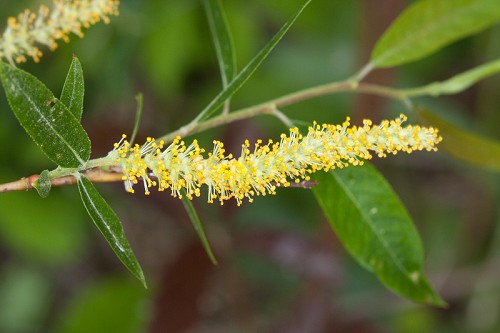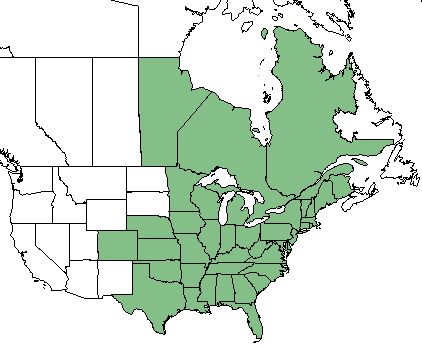Difference between revisions of "Salix nigra"
(→Distribution) |
(→Conservation and Management) |
||
| Line 40: | Line 40: | ||
==Conservation and Management== | ==Conservation and Management== | ||
| + | ''Salix nigra'' can be used as a soil binder when it grows along the banks of streams which helps soil from being washed away and prevent erosion. <ref name= "USDA"> [https://plants.usda.gov/core/profile?symbol=CEAM USDA Plant Database]</ref> | ||
==Cultivation and restoration== | ==Cultivation and restoration== | ||
Revision as of 18:01, 29 May 2018
| Salix nigra | |
|---|---|

| |
| Photo by John Gwaltney hosted at Southeastern Flora.com | |
| Scientific classification | |
| Kingdom: | Plantae |
| Division: | Magnoliophyta - Flowering plants |
| Class: | Magnoliopsida - Dicots |
| Order: | Salicales |
| Family: | Salicaceae |
| Genus: | Salix |
| Species: | s. nigra |
| Binomial name | |
| Salix nigra Marshall | |

| |
| Natural range of Salix nigra from USDA NRCS Plants Database. | |
Contents
Taxonomic Notes
Synonym: S. marginata (Wimmers ex Andersson)
Variety: none
Description
Synonym: S. nigra is a perennial tree of the Salicaceae family that is native to North America.[1]
Distribution
S. nigra is found throughout the eastern United States and Canada, as far west as Texas, Colorado, and Manitoba. [1]
Ecology
Habitat
Conservation and Management
Salix nigra can be used as a soil binder when it grows along the banks of streams which helps soil from being washed away and prevent erosion. [1]